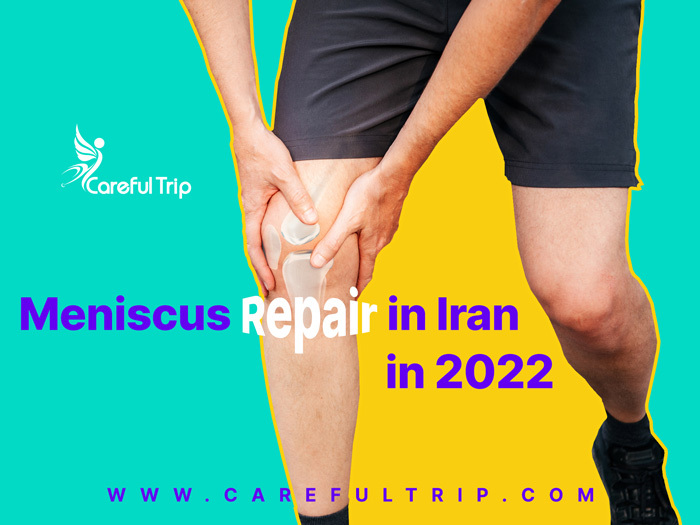
The meniscus is a C-shaped cartilage that sits between the lower leg bone and the thighbone. This piece of cartilage protects the knee joints and the lower part of the legs from our body weight.
A torn meniscus is common among athletes; however, other people might experience this condition by the natural degeneration caused by aging. The damage can also be due to extra pressure on the knees. Meniscus repair in Iran consists of different surgical and non-surgical methods, depending on the severity of your condition.
What causes a meniscus tear?
This condition is widely common among athletes. Sports like soccer that require unexpected runs and jumps even hold a higher risk. Other than sports, a meniscus tear can happen due to putting extra pressure on your knees.
The C-shaped cartilage, that keeps your knee joints protected, is damaged from the added pressure. This can also happen due to aging. The menisci weaken throughout the years and lose their initial ability to carry a particular amount of weight. People who have osteoarthritis are at a higher risk of a meniscus tear.
For more information, read:
Meniscus tear symptoms
The damage to the meniscus results in popping and crackling sounds in your knees. Some symptoms may follow this condition, such as pain around the knee area, inability to move the knee or difficulty in moving it in a certain range, and swelling.
A bursting feeling might also be another symptom. Especially if these symptoms occur after a particular injury, you might want to see a doctor. Depending on the severity of your condition, your doctor will offer you different meniscus repair methods. Some conditions are cured with simple exercises and medications, while others might need surgery.
Considering meniscus surgery
Meniscus surgery is a popular procedure among orthopedic procedures. Before performing this surgery, your doctor will most likely try out other methods. Cortisone injections are among the non-surgical meniscus repair methods. If the tear is severe and other treatments such as medication or home treatments fail, your doctor will suggest surgery. Some factors determine whether you are a suitable candidate for meniscus surgery. Here are these factors:
- Age
Repairing this condition especially occurs in children and young adults; since it interferes with their daily life and activities a lot more.
- The length and size of the tear
The bigger and longer the tear is, the less likely that it will heal on its own. Hence, it needs surgery.
- Other medical knee conditions
Other health conditions in the knees may prevent the healing process of a meniscus tear. In this case, surgery can be the only choice.
Meniscus tear diagnosis
At first, your doctor will test your physical condition and your range of motion. These physical tests involve bending and straightening your knees. Your doctor may also suggest an X-ray exam.
Even though X-rays do not show meniscus tears, they can help with making sure there are not any other health conditions that the patient suffers from. An MRI determines the meniscus tear by taking images of your knees. Even though the MRI is a helpful method, it is not fully reliable and most doctors suggest other tests as well.
Knee arthroscopy
Through knee arthroscopy, your doctor can diagnose all the problems in your knees and joints, and treat them. This happens by making a small incision on your joints and inserting a small camera, also known as the arthroscope. It will display the insides of your joints on a big screen and your condition will be visible. Meniscus tears are also visible through knee arthroscopy.
That is why it is one of the most common steps of this treatment. Knee arthroscopy requires anesthesia. However, the type of anesthesia you will receive (local, general, regional) depends on your condition. This procedure is usually low at risk; however, some risks associated with knee arthroscopy include infections, bleeding, stiffness around the procedure area, and damage to the cartilage. Through a knee arthroscopy, you will figure out if you need to remove or repair a part of your meniscus. Knee arthroscopy also helps the surgeon determine whether you deal with any other orthopedic problems in the particular area.
The meniscus surgery
An orthopedic surgeon performs meniscus surgery.
If the damage involves only a part of your meniscus, the surgeon performs a partial meniscectomy. Through this method, the surgeon only removes the damaged part of the joint. In a meniscus repair, the surgeon inserts meniscus anchors to help hold your joints together. These anchors heal as one piece after full recovery. One might also need to replace the original meniscus in rare cases. The surgeon recommends this method, also known as meniscus reconstruction, usually when the patient experience’s failure with a previous meniscectomy.
Recovery
Meniscus repair surgery has a shorter recovery time than most other surgeries. However, depending on the size and length of the tear, the recovery time ranges from a few weeks up to 4-6 months. Meniscectomy recovery is much shorter, and most patients can get back to their normal lives within a few weeks.
Right after the surgery, the patient will notice pain reduction in the joint area. To gain your previous strength and range of motion, you will need a couple of weeks to rest. Your surgeon will also give you physical exercises to help with the recovery process. Pain relievers will also help you overcome the pain you might feel from time to time.
Meniscus repair in Iran
Meniscus repair in Iran is a reliable procedure. So many patients choose Iran as their medical destination. Different factors play role in making this decision. Highly advanced medical centers and hospitals, professionalism, skilled doctors and surgical teams, cost efficiency and lower prices, safety, and comfort are among the many reasons that candidates choose to perform their surgery in Iran. By picking Iran as your surgical destination, you will be able to receive the highest quality services for the lowest prices. In addition, Iran is a very beautiful country filled with tourist attractions.
The Bottom Line
Meniscus tears are common orthopedic conditions. They occur when the cartilage between the lower leg bone and the thighbone experiences damage. Depending on the severity of the patient’s tear, the repair method is determined. Some patients might need surgery to repair or remove their meniscal tear, while others might not require surgery.
In most cases, the surgeon suggests knee arthroscopy to investigate the joints and make sure there are no other orthopedic threats in the area. Meniscus repair in Iran in 2022 varies in methods. Picking a professional surgeon is a very important step in determining which step suits you best. That is why so many candidates pick Iran as their medical destination. Professionalism and price efficiency play a big role in making this decision. Make sure you perform all the necessary tests before performing this surgery.
For more information, read:

